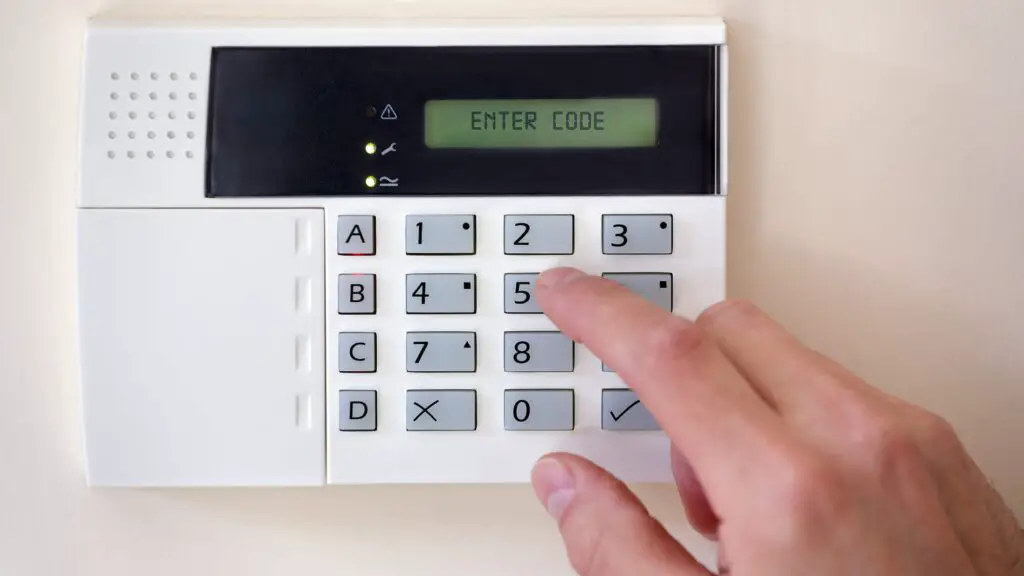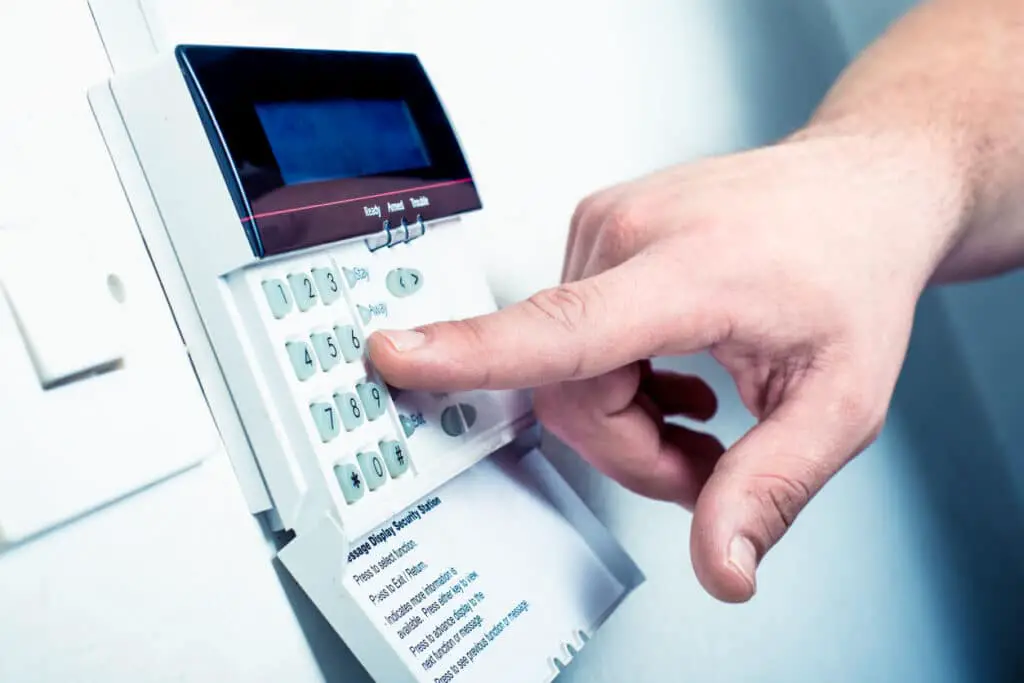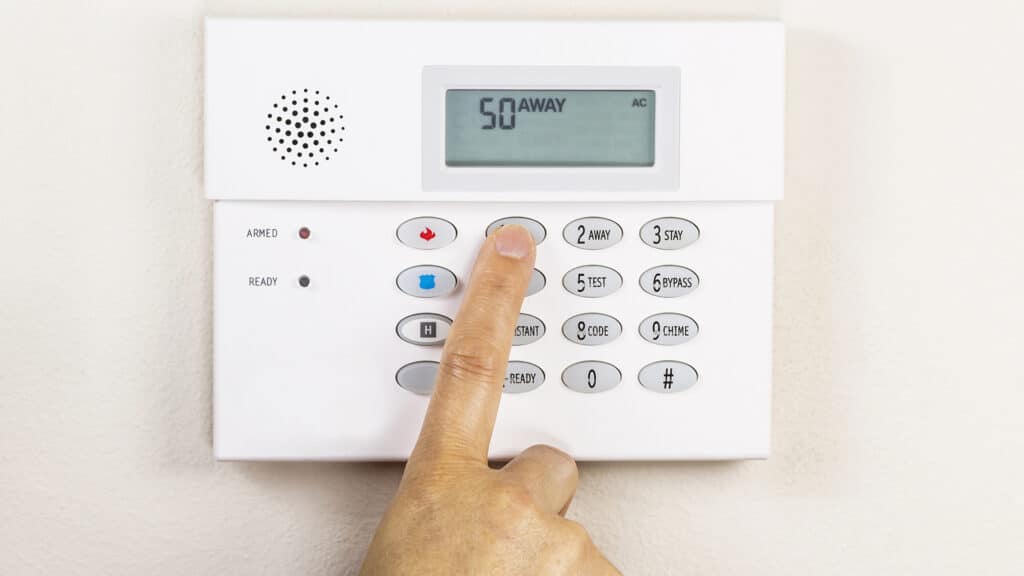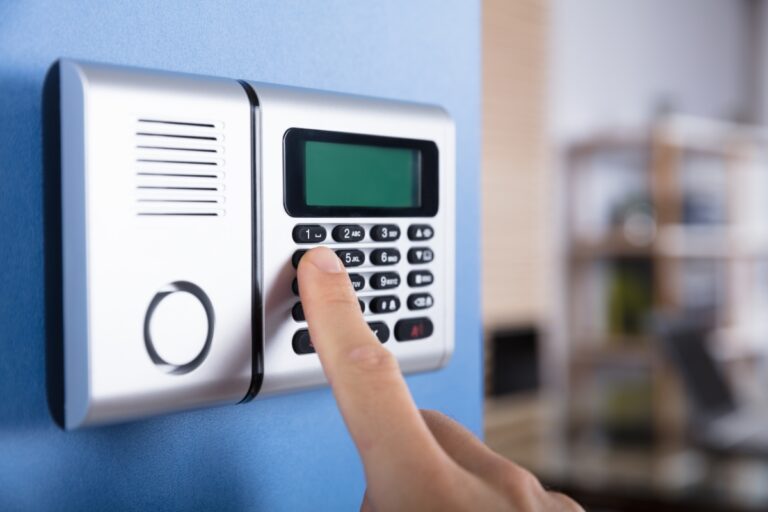Introduction
How To Turn Off Security Alarm With Code: Security alarms are an essential component of ensuring the safety and protection of our homes and businesses. However, there may be occasions when you need to deactivate your security alarm system, whether it’s to enter your premises without triggering the alarm or to reset the system after a false alarm. In such situations, knowing how to turn off a security alarm with code becomes crucial.
The process of disarming a security alarm using the correct security alarm code varies depending on the make and model of your system, so always consult the user manual or contact your security provider for precise instructions. Nonetheless, the general principles discussed here should provide you with a solid understanding of the process.
We’ll begin by highlighting the importance of knowing your security code and the consequences of incorrect entries. Then, we’ll explore the common steps involved in disarming a security alarm system, including locating the control panel, entering the code, and troubleshooting potential issues. Additionally, we’ll offer some tips and best practices to ensure a smooth and efficient disarming process.

How do I turn off my alarm without the code?
Remove the AC power to the home alarm console from the wall directly. Use your console’s access key (or another item such as a small screw) to unlock and open the system’s backing. Lastly, disconnect at least one of the wires that are attached to the system’s main battery, which is blocky and noticeable in most units.
Contact your alarm system provider
If you lose the security alarm code, call your alarm system provider. They can help you disarm the system without the code. Be prepared to verify your identity or ownership before receiving help.
Reset the alarm system
Some alarm systems have a reset option that allows you to clear the existing code and set a new one. This can be done by locating the control panel of your alarm system. Usually, you will need to remove the panel cover and locate the reset button or jumper inside. Consult the user manual or contact the manufacturer for specific instructions on how to reset your alarm system.
Locate the backup battery
In some alarm systems, there is a backup battery that powers the system in case of a power outage. By disconnecting the backup battery, you can temporarily disable the alarm. The backup battery is typically located in the main control panel or in a separate enclosure nearby. However, keep in mind that this method will only disable the audible alarm, and the system may still trigger a silent alarm or send alerts to the monitoring service.
Seek professional assistance
If the above methods do not work or you are uncomfortable attempting to disable the alarm system yourself, it is recommended to seek professional assistance. A locksmith or a technician specializing in alarm systems will have the necessary tools and expertise to safely disable the alarm without causing any damage.
How to Turn Off Security Alarm With Code
Security alarms are essential for protecting homes and businesses, but there are times when you may need to turn them off, such as when entering the premises or after a false alarm. Understanding how to properly disable a security alarm with a code is crucial. This guide covers the steps to safely turn off your alarm, the importance of having the correct code, and tips for troubleshooting if issues arise. Always consult your alarm’s user manual for model-specific instructions.
What is the default code for a security alarm?
The default codes are easy like 0000 or 1234, and many people forget to change them. Changing default codes is very important since many thieves are well aware of the common default codes. The default codes may leave you at high risk.
User handbook: Most alarm system manufacturers give a complete user handbook for setup and operation. It usually includes the default code and instructions for changing it.
Documentation: The default code may be in the alarm system’s documentation. These materials may be included with the alarm system or downloaded from the manufacturer’s website.
Alarm System Manufacturer or installation: If the default code isn’t in the user handbook or documentation, contact the alarm system manufacturer or professional installation who set up the system. They can give you the default code or reset it if it’s been modified.
Online Resources: Alarm system forums, support communities, and websites may have model-specific default codes. To avoid disinformation, check the information using reliable sources.
What is a security alarm used for?
A security alarm is a system designed to detect intrusions, such as unauthorized entry, into a building or other areas, such as a home or school. Security alarms protect against burglary (theft) or property damage, as well as against intruders.
Intrusion detection: Security alarms notify residents or monitoring services of unauthorized entrance. An incursion triggers the alarm system to sound sirens, flash lights, or alert a monitoring center.
Crime Prevention: A visible security alarm system, including signage, sensors, and cameras, deters burglars. Security alarms increase the chance of being caught, thus criminals avoid them.
Security alarms safeguard property assets. A security alarm alerts you to unlawful access to pricey equipment, jewelry, or sensitive documents.
Security alarms protect property and people. Modern alarm systems can detect and alert inhabitants to fire, carbon monoxide, and medical problems.
Which home security alarm is best?
Our top three best home security systems in 2023
- Editor’s Choice – SimpliSafe The Tower: Best overall. Overall Score: 4/5. Editor’s Choice – SimpliSafe The Tower: Best overall.
- ADT Smart Home Alarm Package: Best professional monitoring. Overall Score: 4.5/5.
- Verisure: Best bespoke package. Overall Score: 4/5.
Integration and Smart Home Compatibility: Check if the security system can work with smart home devices like smart locks, thermostats, and voice assistants. Centralized control and automation improve home security and convenience.
Professional vs. DIY: Choose between professional installation and DIY. Professional installation ensures appropriate setup and configuration, while DIY choices are cheaper and provide you more flexibility.
Reputation and Client Support: Read evaluations of security alarm system companies to determine their reliability, client satisfaction, and reaction to inquiries and difficulties. A trustworthy organization with great customer service can give you confidence.
Budget: Set a security alarm budget. Compare initial equipment, monthly monitoring rates, and any additional features or services.

What is laser security alarm?
A laser-based Security System is a type of security and alarm system that uses laser light and a light sensor. A security system protects our homes, offices, banks, lockers, etc., from intrusion and unauthorized access.
Perimeter Protection: Laser security alarms provide an effective means of securing perimeters, such as fences, walls, or boundaries, by creating an invisible barrier that detects intrusions. They act as a deterrent and provide an early warning system against unauthorized access.
Zone Protection: Laser alarms can be configured to protect specific zones or areas within a property, such as doorways, windows, or valuable assets. They are commonly used in high-security areas, museums, or art galleries to safeguard valuable exhibits.
Scalability and Flexibility: Laser security alarm systems can be easily tailored to meet specific security requirements. They can cover small or large areas, and additional laser transmitters and receivers can be added to expand the protected zone.
Discreet and Tamper-Resistant: Since laser beams are typically invisible and installed out of sight, laser security alarms offer a discreet security solution. The beams can be installed above or below ground level, making them less susceptible to tampering or circumvention.
Integration with Other Security Systems: Laser security alarms can be integrated with other security systems, such as CCTV cameras or access control systems, to create a comprehensive security solution. This integration allows for enhanced monitoring, recording, and event correlation.
Weather Resistance: Laser security alarm systems are designed to withstand various weather conditions, including rain, snow, or extreme temperatures. This ensures reliable operation and minimizes false alarms due to environmental factors.
What is the advantage of security alarm?
Advantages and Disadvantages of Installing Alarm Security Systems
An alarm system alerts you when the property is unattended and invaded by thieves. These smart, easy-to-learn devices notify you when intruders attack your property while you are away or sleeping.
Crime Deterrence: One of the primary advantages of a security alarm system is its deterrent effect on potential intruders. Visible alarm signage, surveillance cameras, and other security features signal to would-be criminals that the property is protected, making them more likely to avoid targeting it altogether.
Early Warning and Prompt Response: Security alarm systems provide early warning in the event of unauthorized entry or other security breaches. Audible alarms or alerts sent to monitoring centers or smartphones prompt immediate response, minimizing the time for criminals to cause harm or theft. Quick response times increase the likelihood of apprehending intruders and reducing potential damage or loss.
Peace of Mind: Knowing that your property is protected by a security alarm system can provide peace of mind. Whether you’re at home or away, the system offers reassurance that your property, belongings, and loved ones are being safeguarded.
Remote Monitoring and Control: Many modern security alarm systems offer remote monitoring and control capabilities. With the use of mobile apps or online platforms, users can remotely access their security system, view surveillance camera feeds, receive real-time alerts, and even arm or disarm the system. This allows homeowners or business owners to stay connected and informed about their property’s security status at all times.
Fire and Carbon Monoxide Detection: Some security alarm systems include smoke detectors and carbon monoxide sensors, offering additional protection against fire hazards and the presence of toxic gases. These integrated features provide early detection, alert occupants, and can automatically notify emergency services.
How do security alarms work in stores?
These detection antennas send out a signal, and security tags or labels attached to products and merchandise within a store answer back. When an item with an active tag or label passes by or between these antennas, an alarm sounds, indicating an item is leaving the store.
Alarm Activation: When an unauthorized activity occurs, such as a door opening, motion detected, or glass breaking, the corresponding sensor sends a signal to the control panel. The control panel then processes the signal and determines the appropriate response based on the programmed settings.
Audible Alarms: Audible alarms are the most common type of response in retail stores. They consist of loud sirens or beeping sounds that immediately attract attention within the store. Audible alarms serve as a deterrent and alert store personnel and nearby customers to the potential security breach, encouraging a swift response.
Silent Alarms: In addition to audible alarms, many retail stores have silent alarms integrated into their security systems. These alarms discreetly notify store management or a monitoring center without alerting the intruders. Silent alarms can provide valuable information to security personnel or law enforcement, allowing them to apprehend criminals while minimizing the risk of confrontation.
Monitoring Services: Some retail stores opt for professional monitoring services that provide continuous surveillance and response to security alarms. Monitoring centers receive signals from the security system and quickly assess the situation. They can then dispatch security personnel or contact the appropriate authorities, ensuring a prompt and coordinated response to the security incident.
What triggers security alarms?
Low Batteries or Bad Power Source
When a security system or its sensors have low batteries or aren’t connected to a reliable power source, it can trigger alarms. Some security systems will give a “low battery” warning. But it’s a good idea to make battery changes part of regular maintenance.
Unauthorized Entry: One of the primary triggers for security alarms is unauthorized entry into a protected area. This can include opening a door or window that is equipped with entry sensors or crossing a boundary that is monitored by perimeter sensors. When an entry sensor detects a breach, it sends a signal to the alarm system, activating the alarm.
Motion Detection: Security alarms may include motion sensors that are designed to detect movement within a specific area. These sensors use technologies such as infrared or microwave to sense changes in heat or movement. When a motion sensor detects movement within its range, it triggers the alarm.
Glass Breakage: Glass break sensors are specifically designed to detect the sound or vibrations caused by breaking glass. They are commonly used in windows or display cases to prevent break-ins or theft. When a glass break sensor detects the characteristic sound or vibrations of breaking glass, it activates the alarm.
Tampering or Vandalism: Security alarms can be triggered by tampering or vandalism attempts on the alarm system itself or its components. This can include attempts to disable or tamper with entry sensors, motion sensors, control panels, or other alarm system devices. Tamper sensors or vibration sensors are often used to detect these activities and trigger the alarm.

Conclusion
Incorrect entries or misuse of the security alarm code can result in false alarms, unnecessary stress, and potential consequences. Always refer to the user manual or consult with your security provider for accurate instructions tailored to your specific system. As technology continues to evolve, newer systems may offer additional features or alternative methods for disarming alarms.
Keep yourself informed and adapt accordingly to make the most of your security system. Lastly, always prioritize safety and legality. If you are unsure about any aspect of disarming your security alarm or encounter issues beyond your expertise, seek assistance from professionals or your security provider. Their expertise and guidance can help you navigate any complexities or challenges that may arise.
With the knowledge gained from this guide, you are now equipped to confidently and responsibly turn off your security alarm using the correct code. By ensuring you have a solid understanding of the disarming process, you can maintain the security and peace of mind that comes with owning a reliable security system.
### Suggested Amazon Products:

